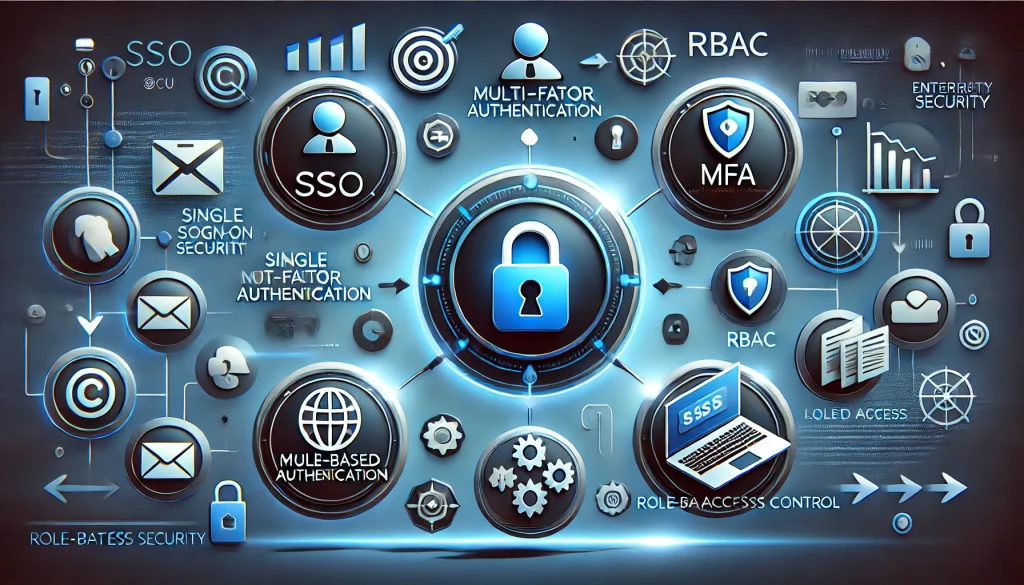
Identity and Access Management (IAM) plays a vital role in modern cybersecurity by controlling who can access critical systems and data within an organization. With the increasing use of digital platforms and remote work, managing identities and permissions has never been more essential. IAM systems offer businesses the tools to ensure only authorized individuals can access sensitive information, preventing unauthorized breaches and minimizing risks.
In 2024, the need for robust IAM solutions has become even more critical, especially as cyber threats grow more sophisticated. This review will explore IAM’s key features, its pros and cons, how it compares to traditional access management, and highlight the top IAM providers in the market. We’ll also examine which types of organizations should prioritize implementing IAM solutions to improve their overall security posture.
Overview of Identity and Access Management (IAM)
Identity and Access Management, commonly referred to as IAM, is a set of tools, policies, and processes used to manage digital identities and regulate access to data and systems. It ensures that the right people have the appropriate access to technology resources within an organization. IAM plays a crucial role in verifying user identities and controlling permissions based on the user’s role within a company.
IAM incorporates several important technologies, such as Single Sign-On (SSO) for streamlined logins, Multi-Factor Authentication (MFA) for enhanced security, and Role-Based Access Control (RBAC) to limit data access based on job functions. These components help organizations protect sensitive information and prevent unauthorized access to their systems. As organizations grow and deal with a higher volume of users, IAM becomes indispensable for managing security risks while providing a smooth user experience.
Pros & Cons of IAM
IAM solutions offer robust security benefits, but like any technology, they come with some drawbacks. Here’s a balanced look at its advantages and disadvantages:
| Pros | Cons |
|---|---|
| Enhances security with MFA and RBAC | Implementation complexity and time-consuming setup |
| Improves user experience with SSO | Initial costs can be high, especially for SMEs |
| Reduces insider threats and unauthorized access | Requires continuous management and updates |
| Ensures compliance with regulations like GDPR | Potential user resistance to stricter controls |
Pros:
IAM bolsters enterprise security by adding multiple layers of authentication and managing role-specific access. SSO makes login processes easier, and MFA adds another level of security. IAM also mitigates insider risks and meets regulatory compliance, which is essential in industries like healthcare and finance.
Cons:
The primary downside is the complexity and cost of implementation, especially for smaller businesses. Setting up and maintaining IAM solutions can require substantial resources. Moreover, it demands ongoing updates to remain effective against emerging cyber threats.
In-Depth Analysis of IAM

Performance
IAM systems excel in performance by reducing the time IT departments spend managing access. Automating user onboarding and offboarding processes is key to maintaining efficiency while ensuring that only authorized users have access to company systems.
Usability
For end-users, IAM’s SSO and MFA features offer a smoother, more secure experience. Users no longer need to juggle multiple passwords or remember credentials for numerous systems. However, implementing MFA might introduce slight friction for users unfamiliar with two-factor authentication.
Security
Security is where IAM shines. By consolidating identity management into a central platform, it becomes easier to detect irregularities and prevent unauthorized access. IAM systems also ensure that audit trails are available for regulatory requirements, which is critical for industries like finance and healthcare.
Scalability
One of the greatest strengths of IAM is its scalability. Whether your company has 50 employees or 50,000, IAM platforms can adapt and scale to meet growing needs without compromising security or functionality.
Identity and Access Management (IAM) vs. Traditional Access Management

Traditional access management systems rely on manual processes to authenticate users and grant permissions. Typically, this involves password-based authentication, where users input passwords to access systems. However, this method is prone to human error and security risks. For instance, weak or reused passwords can easily be compromised, leading to unauthorized access to sensitive data.
IAM differs significantly by automating these processes and introducing stronger authentication methods, such as MFA and biometrics. Instead of relying solely on passwords, IAM verifies users through multiple authentication factors, making it more secure. IAM also centralizes access control, making it easier to manage permissions for large groups of users, which traditional systems struggle with as organizations grow.
Moreover, traditional systems lack audit trails and detailed monitoring, which are key features of IAM that help businesses stay compliant with data security regulations. As companies adopt cloud services and handle more digital identities, IAM offers a scalable and secure solution, while traditional methods lag behind.
Top IAM Providers & Pricing Trends
Here are some of the top IAM providers in 2024 and their general pricing trends:
Microsoft Azure Active Directory (Azure AD)
Azure AD is a leading cloud-based IAM solution, known for its seamless integration with Microsoft products. Its pricing is subscription-based, with different tiers depending on the size of the organization and the level of features needed.
Okta
Okta is renowned for its user-friendly platform and strong security features. It offers pricing based on the number of users and services required, making it a popular choice for small to medium-sized businesses.
SailPoint
SailPoint specializes in identity governance, making it ideal for large enterprises with strict compliance needs. Pricing depends on the complexity of the organization’s security requirements.
These providers lead the market by offering advanced features like MFA, SSO, and PAM, along with customizable pricing plans to suit different business sizes.
Who Should Implement IAM?
IAM is crucial for any business that handles sensitive data or deals with regulatory compliance. Industries like healthcare, finance, and education benefit the most from IAM systems because they often manage confidential information. By implementing IAM, these organizations can control who accesses their data, reducing the risk of breaches or unauthorized access.
Businesses with remote workforces or those using cloud-based platforms should also prioritize IAM. With employees accessing systems from various locations and devices, IAM ensures secure authentication and access management across different environments. Small to medium-sized businesses that anticipate growth should also consider IAM early to scale their security as they expand.
Conclusion: Is Identity and Access Management (IAM) Worth It?
IAM is an essential tool for businesses looking to enhance their security and improve operational efficiency. By automating user identity management, implementing SSO, MFA, and RBAC, organizations can significantly reduce the risks associated with unauthorized access and data breaches. While setting up an IAM system can be complex and costly, the long-term benefits—such as improved compliance, reduced insider threats, and better user experience—far outweigh the initial investment.
For businesses handling sensitive data or managing large user groups, IAM is not just a luxury, but a necessity. As cyber threats continue to evolve, implementing IAM is one of the most effective ways to safeguard an organization’s digital assets.
FAQ
What are the key benefits of IAM?
IAM enhances security, improves user access management, ensures compliance, and reduces the risk of insider threats.
How does IAM differ from traditional access management?
IAM automates and centralizes user identity management, whereas traditional systems rely on manual processes and are less scalable.
What types of businesses should implement IAM?
Any organization that handles sensitive data, including healthcare, finance, and large enterprises, should implement IAM to ensure data security and compliance.
Resources
- CSO Online. What is IAM? Identity and Access Management Explained
- Microsoft. What is Identity and Access Management (IAM)?
- Savvy Security. IAM Explained
- BizTech Magazine. How IAM is Transforming Security for Businesses
- Silverfort. Best IAM Tools
